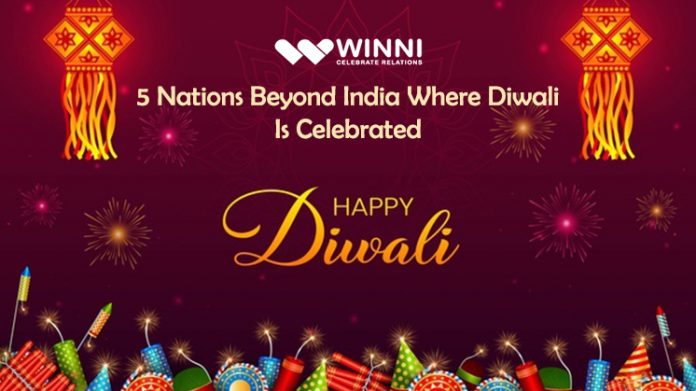Diwali, the festival of lights, represents the triumph of good over evil, light over darkness, and knowledge over ignorance. Celebrations include the lighting of oil lamps on the day that purports the return of Lord Ram after 14 years in exile, as depicted in the epic Ramayana. Other Diwali customs include Diwali gifting, feasting on traditional sweetmeats, and dressing up in new clothes.
Significance Of Diwali
Diwali is a festival celebrated across India with much zeal during October and November. Diwali is a celebration of prosperity; therefore, there is a display of one’s economic power at all levels of society. People clean their homes, get rid of old and undesirable items, and buy new items. On Diwali, Hindus believe that Lakshmi, the Goddess of Wealth and Prosperity, would pay them a visit; ushering them a long spell of abundance and contentment. With all of the advantages of the Diwali holiday and environment, there is also an infusion of some severe downsides. Diwali is marked with the lighting of lamps and the bursting of crackers. During Diwali celebrations, sound and noise pollution reaches extreme levels. All this is having a negative impact on people’s health, particularly the elderly and infants.
Here’s how Diwali, a festival of gratitude and joy, is celebrated around the globe.
Australia
Cities such as Sydney and Melbourne have a sizable Indian community. Diwali at Federation Square in Melbourne, for example, hosts Australia’s largest Diwali festival. There is a huge display of fireworks here and live entertainment such as traditional Indian dances and cultural presentations. Diwali is celebrated magnificently here, and it is a gorgeous place to celebrate Diwali outside of India.
Malaysia
Malaysia, fascinating in its diversity, boasts a plethora of enthralling natural wonders and attractions. With 20 million people, including a harmonious multi-ethnic mix of Malays, Malaysia ensures a vibrant blend of cultural beliefs. Malaysia’s Hindu population accounts for around 8% of the total population. Malaysians celebrate Diwali as Hari Diwali. This festival takes place in the seventh month of the Hindu solar calendar. The celebrations are preceded by the South Indian practice of oil baths. The celebration includes temple visits and prayers at home altars. Little clay lamps, filled with coconut oil and wicks, are a common sight. On this day, people also give Diwali sweets to their loved ones to celebrate happiness.
Mauritius
Mauritius is a beautiful island near Madagascar that has spectacular vistas and fantastic places. Mauritius accounts for 63 percent of the Indian population, with Hindus constituting the other 80 percent. The celebration of practically all Hindu festivals on this island is thus commonplace. The Diwali festival is a long-standing tradition on this island. The Diwali Festival is very important to the people of Mauritius. They allege that Diwali was celebrated when Lord Rama’s returned from exile and coronation as King. The adornment sees the event of clay lamps in the rows, which creates visuals out of the rows. People worship Goddess Lakshmi as the goddess of prosperity, and fireworks ward off evil spirits.
Singapore
In Singapore, Diwali is known as Deepavali and is a public holiday. This event is celebrated in Chinatown near the Sri Mariamman Temple, which attracts many people during this time for prayers and to enjoy the festivities with their loved ones. Many people shop for new handlooms and jewelry on High Street during this festival, where Deepavali was initially commemorated in the 1900s. Many people visit the Kalaa Utsavam arts festival held yearly in Esplanade during the Deepavali season to immerse themselves in Indian performing arts.
Guyana
According to the Hindu calendar, the Republic of Guyana, located in South America, also celebrates the festival of light. Diwali is celebrated in the same way it is in India, with the gift of sweets, the adornment of homes, and trips to family and friends. The festival first took place in Guyana in the early 1980s.




